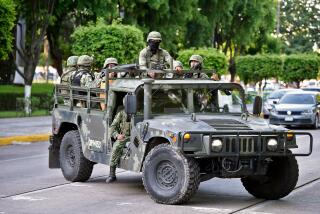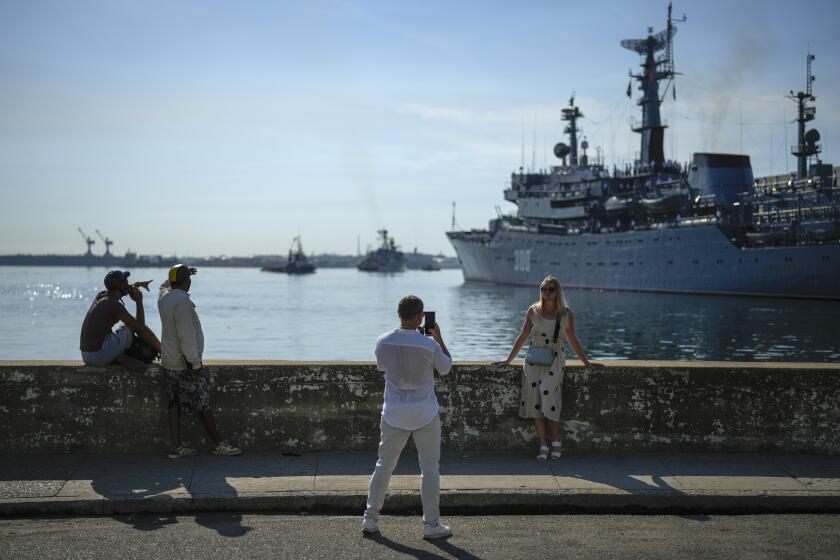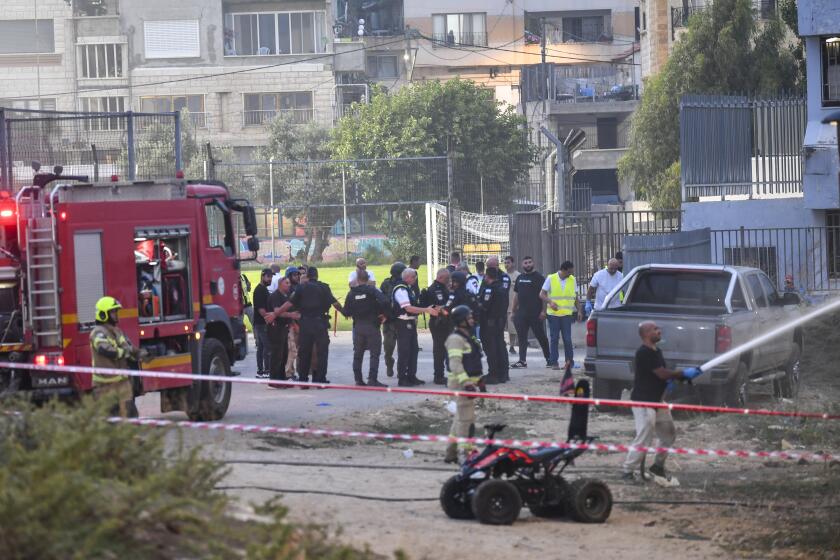Exhibit Lifts Cover Off Female Spies
Julia Child had a hand in concocting a shark repellent that helped Allied forces blow up German U-boats during World War II, and entertainer Josephine Baker carried secret messages in sheet music across Europe.
They were among the cloak-and-dagger set honored in a new museum exhibit on female spies--”Clandestine Women, the Untold Stories of Women in Espionage”--which opened last week at the women’s memorial at Arlington National Cemetery.
New hires at the CIA are told the legendary stories of female spies to illustrate that espionage has been around for a long time, said Linda McCarthy, a former curator of the museum at CIA headquarters, who helped organize this exhibit.
Child, before she became a famous chef, joined the CIA’s predecessor, the Office of Strategic Services, where she had administrative duties, worked in Ceylon--now Sri Lanka--and China, and also helped develop the shark repellent.
The U-boats controlled the Atlantic shipping lanes, so the Americans and British were sneaking up and attaching explosive devices.
“They were having a problem with sharks,” McCarthy said on a tour of the exhibit. “Sharks are curious animals; they would swim up and dislodge the thing.”
The shark would blow up, revealing that the U-boat had been targeted, so the Germans would move it. But the shark repellent came to the rescue. “It was so good it was used throughout World War II,” McCarthy said.
Baker, who gave up her American citizenship in 1937 and became a French citizen, used her glamour to hide spies for the French Resistance among her entourage and transport messages hidden in her sheet music all over Europe.
“What she would do because she was Josephine Baker and welcomed up and down the continent of Europe, she would take spies with her review,” McCarthy said. “On her sheet music in invisible ink were secret messages and she ferried them all around the European continent.”
Marlene Dietrich, who gave up her German citizenship in 1937 to become an American, at the request of the OSS for its propaganda efforts, recorded American songs in German that captured a wide audience in Germany.
“They revered Marlene Dietrich,” McCarthy said. “They knew the instant they had Marlene Dietrich singing popular American songs in German that they would have this German audience instantly.”
A woman to this day known only as “355”--”lady” in the code used by the Culper Ring in New York, which gathered intelligence on the British during the American Revolution--helped expose American traitor Benedict Arnold.
“People have this notion of spies as James Bond. No, he is an example of a very bad spy. Why? You even know what he drinks--shaken, not stirred,” McCarthy said, referring to the fictional Bond’s martinis.
“In the case of 355, we don’t even know what she looked like, but there is historical documentation to what she achieved,” she said.
McCarthy says one of her favorite female spies was Virginia Hall. She first learned spycraft from the British because the Americans were initially leery of her wooden leg, the result of a self-inflicted gunshot wound in a hunting accident. But then America sent her ashore in Normandy to organize elements of the French Resistance ahead of D-day.
Hall code-named her wooden leg “Cuthbert” and any communication about it, such as a need for more special socks to cushion the leg from the wood, would use that reference.
The exhibit also displayed some spy gadgets. The “dog doo” transmitter looks like a piece of excrement that, when activated, would signal to planes a drop zone for forces or supplies.
Matchbooks distributed by the United States overseas to obtain information on terror suspects included one with a picture of Ramzi Yousef, convicted of the 1993 World Trade Center bombing, and another showed an open chest with stacks of bills and explained the reward in Arabic.
“SOB” knives, for “small of the back” where they were carried, could be quickly reached and thrown.
A slim silver bar of a camera could photograph hundreds of secret documents with one roll of film. It came with an enlarger and a developing kit for the field, McCarthy said.
More to Read
Sign up for Essential California
The most important California stories and recommendations in your inbox every morning.
You may occasionally receive promotional content from the Los Angeles Times.






